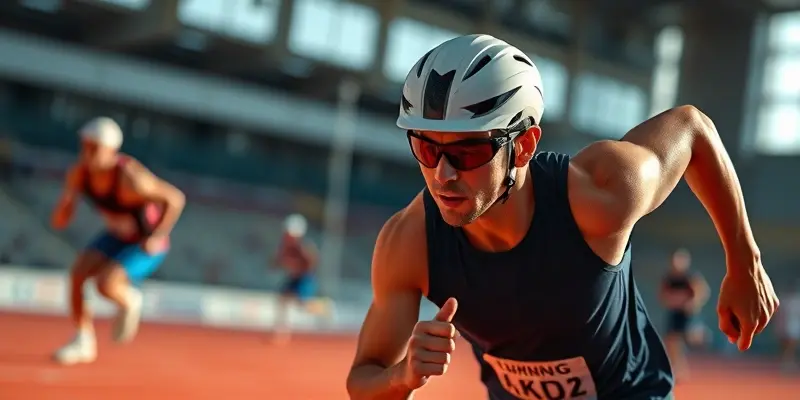The Missing Link in Recovery: Why Flexibility and Balance Training Matter
Have you ever pushed through an intense workout, only to be sidelined by an injury? Or found your progress stalled by nagging aches that just won’t go away? Recovery isn’t just about rest—it’s about building a body that can bounce back stronger. The secret? Prioritizing flexibility and balance in your routine.
Whether you’re just starting your fitness journey or training at an elite level, understanding how flexibility and balance impact injury prevention and recovery can transform your athletic performance—and your overall well-being.
Why Flexibility & Balance Are Game Changers
The Science of Staying Injury-Free
When muscles and joints are tight or unstable, every movement becomes riskier. Research shows that routines focused on flexibility (think yoga and stretching) and balance (think tai chi and stability workouts) dramatically reduce the chance of common injuries like sprains, strains, and joint issues.
Enhanced flexibility means your muscles and connective tissues can absorb shocks better, reducing stress on joints. Good balance means your body can react quickly and safely to the unexpected—whether that’s landing a jump, changing direction, or even just running on uneven ground.
Proven Methods: More Than Just Stretching
- Yoga: Builds flexibility, core strength, and proprioception. It improves blood flow and speeds up tissue repair.
- Tai Chi & Pilates: Boost balance and core stability, key for both fall prevention and injury rehab.
- Dynamic and Static Stretching: Done regularly (2–3 times weekly), stretches prepare your body for action and keep muscles resilient.
How to Add Flexibility & Balance Training to Your Week
Building Your Personal Recovery Routine
A well-rounded recovery plan isn’t complicated, but it does require consistency. Here’s what I recommend based on both science and hands-on experience with athletes of all levels:
-
2–3 Sessions/Week
-
Yoga, Pilates, or tai chi classes (even short home routines count!)
-
Dedicated balance drills: single-leg stands, heel-to-toe walks, balance board exercises
-
Every Workout
-
Warm up with dynamic stretching (leg swings, arm circles)
-
Finish with gentle static stretches (hamstrings, quads, calves, shoulders)
Tools That Accelerate Recovery
- Foam Rollers & Massage Balls: Promote muscle recovery, reduce soreness.
- Balance Boards or Wobble Cushions: Improve proprioception and joint stability.
- Fitness Trackers: Monitor your range of motion, sleep, and overall progress.
Recovery Beyond Exercise: Nutrition & Mindset
Eat to Heal: What Your Body Needs
After injury or intense training, your body craves certain nutrients:
- Protein: For tissue repair.
- Omega-3s: To fight inflammation.
- Vitamin C, D, Calcium: For strong connective tissues and bones. Learn more about vitamin C immunity athletes and the role of calcium for bone strength.
- Antioxidants & Hydration: Support immune function and cellular repair. Discover the benefits of antioxidants in sports nutrition.
Stay Motivated: Mindset Tools
Recovery can test your patience. Here’s how to stay engaged:
- Set Achievable Milestones: Celebrate small wins—regaining full motion, balancing longer, or completing a new yoga pose.
- Visualization & Mindfulness: Use guided breathing or imagery (common in yoga and tai chi) to reduce anxiety about injury. Explore techniques on visualization for healing.
- Progress Journals: Track your recovery journey. This boosts motivation and reveals what’s working best for you.
Real-World Examples & FAQs
What Injuries Benefit the Most?
Sprains, muscle strains, and tendinopathies respond especially well to flexibility and balance-centric recovery. Even if you’re starting from scratch—think beginner chair yoga or gentle balance drills—results add up quickly with consistency.
Case in Point: Maria’s Comeback
Maria, a recreational runner, suffered an ankle sprain. By adding two weekly yoga sessions and daily balance drills, she regained strength and stability in half the expected time, and has remained injury-free since.
The Takeaway: Commit to Your Recovery
Integrating flexibility and balance won’t just help you recover—they’ll make you a better athlete, whatever your level. The best time to start? Today. Try adding a ten-minute stretch after each workout, or spend five minutes balancing while you brush your teeth.
Recovery is more than downtime—it’s a launchpad for your next personal best. Ready to future-proof your body? Your journey starts with that first stretch.
Feel inspired? Share your recovery story with the Gympulse community, and let’s keep moving forward—stronger and safer together!

